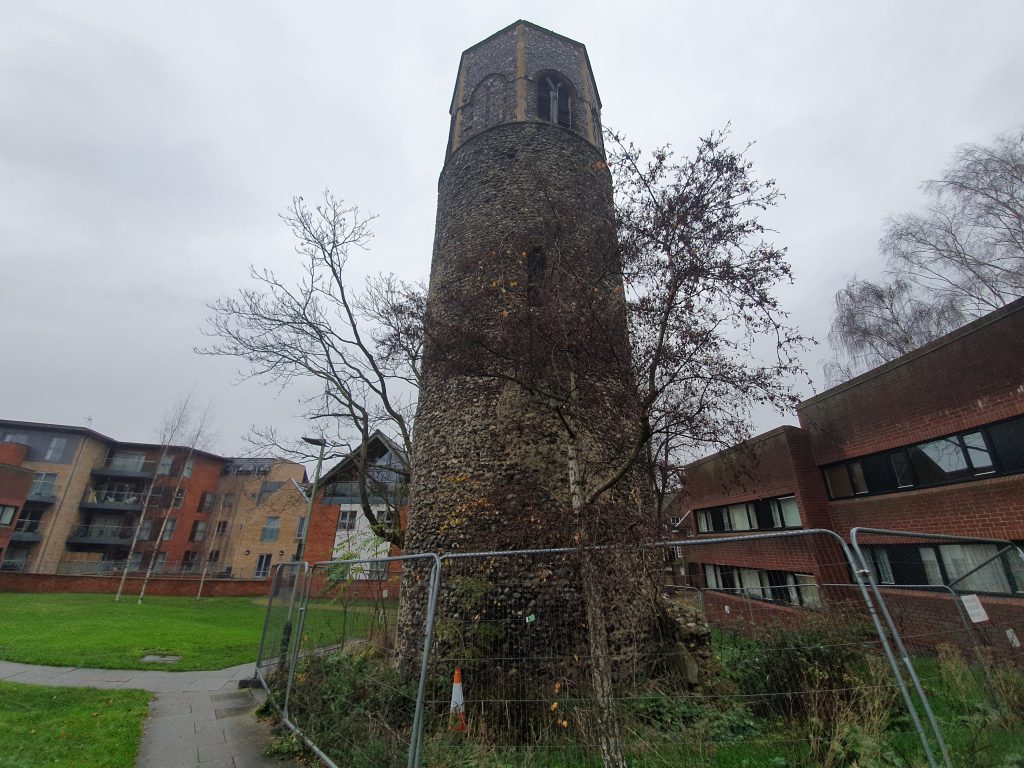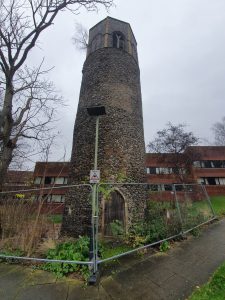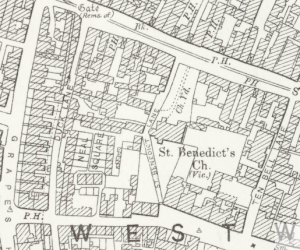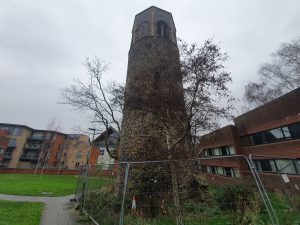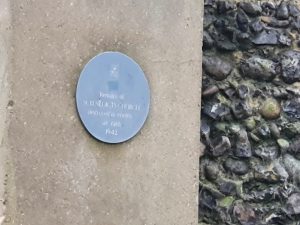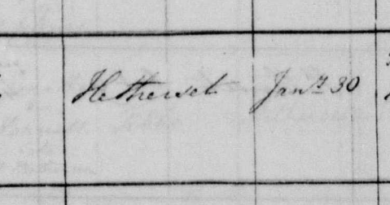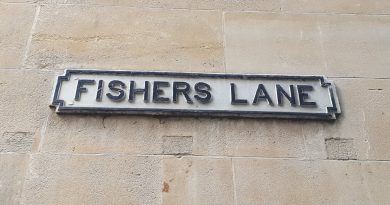Norwich – St Benedict’s Church
I’ve been meaning to visit the ruined church of St. Benedict’s for a while, but finally managed it on my little meander yesterday. As mentioned in that post, this is how the church looked in 1934.
This is the rather urban environment from 100 years ago, with the landscape now entirely changed. Grapes Hill has been mostly destroyed by road construction, whilst the Second World War saw the end to this area of housing. And, indeed, also to St. Benedict’s Church, destroyed by German bombers in 1942.
This is a sad end to the church, although a designer at one point tried to make it the centrepiece of a new housing development. Personally, I’m unsure why a decision wasn’t made to secure and retain the walls that were left, making the area into a peaceful park and then putting the housing around that. Instead, this is probably the inevitable outcome, but at least the tower is still here.
The tower has now been pretty much abandoned though, barriered off to prevent anyone getting near to it. This is an eleventh century tower (or possibly slightly later, the nave was from that date and the tower was likely built slightly after) of not inconsiderable importance and is rightly Grade I listed. There was a large archaeological investigation in 1972 when the housing was built here which meant that the area is well recorded. There was a font of note dating from 1320, although that was safely transferred to Erpingham Church as it escaped damage during the air raid bombing.
The church had been restored in the early 1860s, with a re-opening event on Thursday 4 August 1864 to show off their new organ and interior restoration. It had been a hard fought battle to get funds for this, I can’t help but feel sad for those who would have sacrificed to make a donation to repair this building given the ultimate outcome.
There was perhaps a more interesting meeting in August 1894, when concern was raised about the church’s tower and roof, which was leaking. Someone at the meeting said that it was the duty of the parishioners to ensure that the church remained in good repair, something that would have no doubt gone down with some incredulity given the limited wealth of the residents. But, legally, this was right, it was their problem and the stones falling from the tower damaging the roof needed fixing.
A debate, which from reporting seemed quite heated, ensued about what had actually happened to the church funds. It was said that a third of the charitable funds from the church went to the poor, a third to the churchwardens and a third to the fabric of the building. So, what happened to that third to ensure that the fabric of the building didn’t suffer? No-one seemed quite sure.
The chair of the meeting declared that they were a poor parish and help was needed, saying the church couldn’t meet the ordinary expenses of the building, let alone extraordinary ones. So, a fund-raiser was needed. There was then a debate about how much some basic repairs would cost, with £5 being suggested. One person at the meeting wasn’t impressed, he said the scaffolding would cost more than that. Someone else mentioned they were pleased that the matter discussed now was raising money and not worrying about the money had gone. This is why I suspect the meeting got quite sidetracked…. Anyway, it was agreed that the church should raise some money from a few supporters to pay for immediate repairs, leaving a general request of parishioners to meet the expected larger bill required to properly fix matters.
As can be seen, a big effort has been made to provide an informative history to the church….. Other than this (which I had to zoom in to see as it’s behind the barriers) there is no information board about the site at all, something that the site probably could do with. Informative and orientation boards can be enormously useful to understanding a building and giving some interpretation to what the area looked like.

